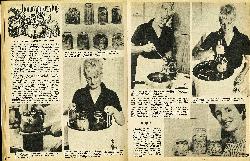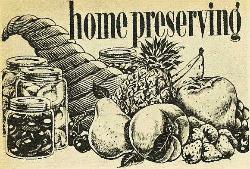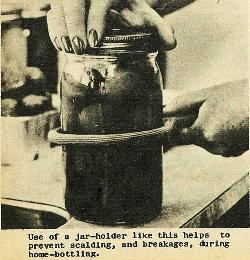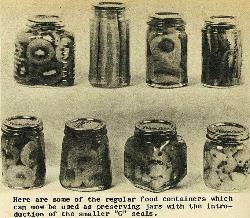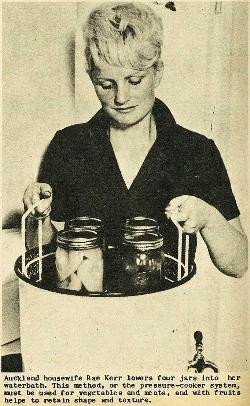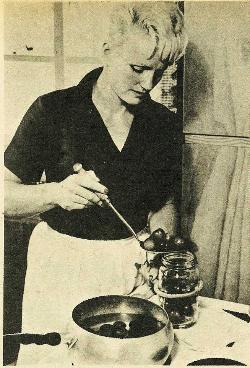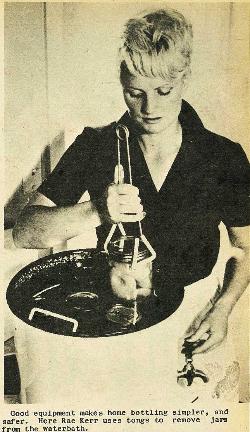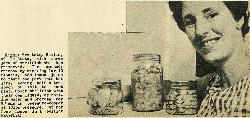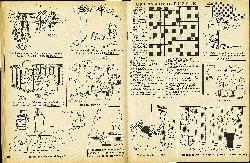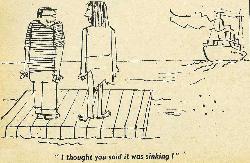40
home preserving
A "Photo News" Feature By Susan Baker
New Zealand housewives are the world's champion home bottlers, on a population basis. They put down about 20 million jars of preserved food each year. And right now, with fruits and vegetables plentiful and relatively cheap, home bottlers are approaching the peak of their activity.
The young housewife, with little or no previous bottling experience, need not feel nervous about joining the throng. Home bottling is safe and simple, provided a few straightforward rules are followed:
Remember that all vegetables except tomatoes, and all meats, are non-acid foods and must be preserved by processing the sealed jars in a boiling waterbath or in a pressure cooker.
Never taste preserved non-acid foods until they have been further cooked after removal from the jars.
Although fruits can be bottled by the "overflow" method (in which the jars require no processing), there are advantages in preserving fruits by the waterbath system, because they will hold their shape better.
A final point: A wide range of grocery lines are now being marketed in screw-top jars (coffee and honey, for example) which can be adapted for home bottling with the recent introduction of the smaller "G" seals specially designed to fit those jars. It's a sensible way of making use of the jars, and cuts costs in your home preserving.
Use of a jar-holder like this helps to prevent scalding, and breakages, during home-bottling.
Here are some of the regular food containers which can now be used as preserving jars with the introduction of the smaller "G" seals.
Auckland housewife Rae Kerr lowers four jars into her waterbath. This method, or the pressure-cooker system, must be used for vegetables and meats, and with fruits helps to retain shape and texture.
41
Placing plums in a jar during bottling. Plums can be preserved by waterbath, pressure-cooker, or overflow methods. The recipes:
Plums (overflow)
Select plums which are not too ripe, wash and stem. Prick them with a needle to prevent bursting. Boil them for 15 minutes in a medium or heavy syrup, then pack boiling hot into sterilised jars and seal.
Plums (cold pack)
Prepare as for overflow, but without pre-cooking. Pack the plums into clean jars and fill to within half an inch of the top with medium or heavy syrup. Seal the jars with Perfit seals and process them for 20 minutes in a boiling waterbath, or for six minutes in a pressure-cooker at 51bs pressure.
Good equipment makes home bottling simpler, and safer. Here Rae Kerr uses tongs to remove jars from the waterbath.
Mrs Betty Hamlin, of Te Atatu, with three jars of shellfish she has preserved. The method: Precook by steaming for 10 minutes, add lemon juice to taste and pack into hot jars, adding half a teaspoon of salt to each pint. Cover shellfish with their own liquid, or boiling water and process for 90 min in pressure-cooker at 101bs pressure, or for four hours in a boiling waterbath.
42
"It doesn't seem any time ago I was too young for boys—now I'm too old for them."
"It's her twentieth driving test today—she must drive those instructors up the wall!"
" Don't worry . . . I'll have the combination in a minute, and we'll get you out of there . . ."
"I don't see anything I fancy."
" I thought you said it was sinking !"
" The plates and ink were perfect, but the fiver I used as a model turned out to be counterfeit!"


